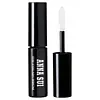What's inside
What's inside
 Key Ingredients
Key Ingredients

 Benefits
Benefits

 Concerns
Concerns

No concerns
 Ingredients Side-by-side
Ingredients Side-by-side

Water
Skin ConditioningButylene Glycol
HumectantIsopentyldiol
HumectantGlycosyl Trehalose
Emulsion StabilisingDipropylene Glycol
HumectantHydrogenated Starch Hydrolysate
HumectantPentylene Glycol
Skin ConditioningPrunus Amygdalus Dulcis Oil
Skin ConditioningUlmus Davidiana Root Extract
Skin ConditioningPanax Ginseng Root Extract
EmollientRosa Canina Fruit Extract
AstringentRosa Canina Fruit Oil
EmollientAnthemis Nobilis Flower Extract
MaskingDipotassium Glycyrrhizate
HumectantGlycyrrhetinic Acid
Skin ConditioningOryza Sativa Extract
AbsorbentAscorbyl Dipalmitate
AntioxidantCamellia Seed Oil
Centella Asiatica Extract
CleansingTocopherol
AntioxidantPanthenol
Skin ConditioningBiotinoyl Tripeptide-1
Macadamia Ternifolia Seed Oil
EmollientPrunus Persica Kernel Oil
EmollientHydrolyzed Silk
HumectantTocopheryl Acetate
AntioxidantPPG-6-Decyltetradeceth-30
EmulsifyingAcrylates/C10-30 Alkyl Acrylate Crosspolymer
Emulsion StabilisingLactic Acid/Glycolic Acid Copolymer
Skin ConditioningXanthan Gum
EmulsifyingCitric Acid
BufferingSodium Citrate
BufferingGlycerin
HumectantZea Mays Oil
EmulsifyingHydroxyethylcellulose
Emulsion StabilisingPolyvinyl Alcohol
Potassium Hydroxide
BufferingPhenoxyethanol
PreservativeMethylparaben
PreservativeParfum
MaskingWater, Butylene Glycol, Isopentyldiol, Glycosyl Trehalose, Dipropylene Glycol, Hydrogenated Starch Hydrolysate, Pentylene Glycol, Prunus Amygdalus Dulcis Oil, Ulmus Davidiana Root Extract, Panax Ginseng Root Extract, Rosa Canina Fruit Extract, Rosa Canina Fruit Oil, Anthemis Nobilis Flower Extract, Dipotassium Glycyrrhizate, Glycyrrhetinic Acid, Oryza Sativa Extract, Ascorbyl Dipalmitate, Camellia Seed Oil, Centella Asiatica Extract, Tocopherol, Panthenol, Biotinoyl Tripeptide-1, Macadamia Ternifolia Seed Oil, Prunus Persica Kernel Oil, Hydrolyzed Silk, Tocopheryl Acetate, PPG-6-Decyltetradeceth-30, Acrylates/C10-30 Alkyl Acrylate Crosspolymer, Lactic Acid/Glycolic Acid Copolymer, Xanthan Gum, Citric Acid, Sodium Citrate, Glycerin, Zea Mays Oil, Hydroxyethylcellulose, Polyvinyl Alcohol, Potassium Hydroxide, Phenoxyethanol, Methylparaben, Parfum
Water
Skin ConditioningIsopentyldiol
HumectantPropanediol
SolventGlycerin
HumectantHydroxypropyl Methylcellulose
Emulsion StabilisingRicinus Communis Seed Oil
MaskingPanthenol
Skin ConditioningNephelium Lappaceum Seed Extract
Skin ConditioningCamellia Japonica Seed Oil
EmollientCamellia Sinensis Seed Oil
HumectantCamellia Japonica Flower Extract
EmollientCamellia Japonica Seed Extract
Skin ConditioningSodium Polyacrylate Starch
AbsorbentHydroxyacetophenone
AntioxidantSchisandra Chinensis Fruit Extract
Skin ConditioningCaprylyl Glycol
Emollient1,2-Hexanediol
Skin ConditioningMaltodextrin
AbsorbentBiotinoyl Tripeptide-1
Water, Isopentyldiol, Propanediol, Glycerin, Hydroxypropyl Methylcellulose, Ricinus Communis Seed Oil, Panthenol, Nephelium Lappaceum Seed Extract, Camellia Japonica Seed Oil, Camellia Sinensis Seed Oil, Camellia Japonica Flower Extract, Camellia Japonica Seed Extract, Sodium Polyacrylate Starch, Hydroxyacetophenone, Schisandra Chinensis Fruit Extract, Caprylyl Glycol, 1,2-Hexanediol, Maltodextrin, Biotinoyl Tripeptide-1
Ingredients Explained
These ingredients are found in both products.
Ingredients higher up in an ingredient list are typically present in a larger amount.
Biotinoyl Tripeptide-1 is a lab-made molecule that combines two parts: biotin (vitamin B7) and Tripeptide-1. Together, they form a peptide that’s often used in hair and eyelash products.
In-vitro studies show this ingredient helps hair bulb cells grow faster and product more structual proteins. This helps keep hair securely anchored in the follicle.
A small human study using a mascara with 2% Biotinoyl Tripeptide-1 reported lashes that were about 17% longer and 19% thicker after one month.
One study from 2025 compared topical spray vs. a combined tropical/oral treatment. The combination group saw greater increases in total hair count.
While these early results are encouraging, most of the data comes from in-vitro experiments (in test tubes) or small, short-term trials.
Biotinoyl Tripeptide-1 looks promising for supporting hair strength and growth but there’s not yet strong clinical evidence to confirm how well it works.
Learn more about Biotinoyl Tripeptide-1Glycerin is already naturally found in your skin. It helps moisturize and protect your skin.
A study from 2016 found glycerin to be more effective as a humectant than AHAs and hyaluronic acid.
As a humectant, it helps the skin stay hydrated by pulling moisture to your skin. The low molecular weight of glycerin allows it to pull moisture into the deeper layers of your skin.
Hydrated skin improves your skin barrier; Your skin barrier helps protect against irritants and bacteria.
Glycerin has also been found to have antimicrobial and antiviral properties. Due to these properties, glycerin is often used in wound and burn treatments.
In cosmetics, glycerin is usually derived from plants such as soybean or palm. However, it can also be sourced from animals, such as tallow or animal fat.
This ingredient is organic, colorless, odorless, and non-toxic.
Glycerin is the name for this ingredient in American English. British English uses Glycerol/Glycerine.
Learn more about GlycerinIsopentyldiol is a synthetic solvent, humectant, and emollient.
Humectants have the ability to attract and hold water while emollients create a thin film to prevent water from evaporating. This combination keeps your skin and hair soft and hydrated. Plus, isopentyldiol does not leave a sticky feeling behind.
As a surfactant, isopentyldiol is a hydrotrope. Hydrotropes help surfactants (cleansing agents) dissolve into water.
According to the manufacturer, using this ingredient with sorbitol boosts skin hydration and helps close cuticles of damaged hair.
This ingredient is water-soluble.
Learn more about IsopentyldiolPanthenol is a common ingredient that helps hydrate and soothe the skin. It is found naturally in our skin and hair.
There are two forms of panthenol: D and L.
D-panthenol is also known as dexpanthenol. Most cosmetics use dexpanthenol or a mixture of D and L-panthenol.
Panthenol is famous due to its ability to go deeper into the skin's layers. Using this ingredient has numerous pros (and no cons):
Like hyaluronic acid, panthenol is a humectant. Humectants are able to bind and hold large amounts of water to keep skin hydrated.
This ingredient works well for wound healing. It works by increasing tissue in the wound and helps close open wounds.
Once oxidized, panthenol converts to pantothenic acid. Panthothenic acid is found in all living cells.
This ingredient is also referred to as pro-vitamin B5.
Learn more about PanthenolWater. It's the most common cosmetic ingredient of all. You'll usually see it at the top of ingredient lists, meaning that it makes up the largest part of the product.
So why is it so popular? Water most often acts as a solvent - this means that it helps dissolve other ingredients into the formulation.
You'll also recognize water as that liquid we all need to stay alive. If you see this, drink a glass of water. Stay hydrated!
Learn more about Water